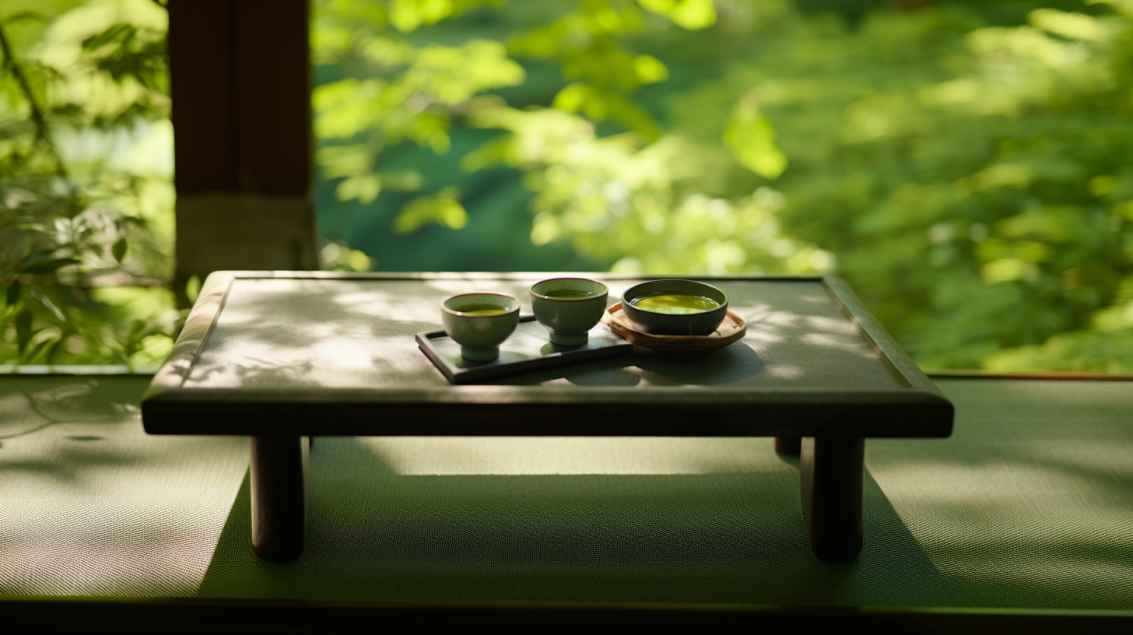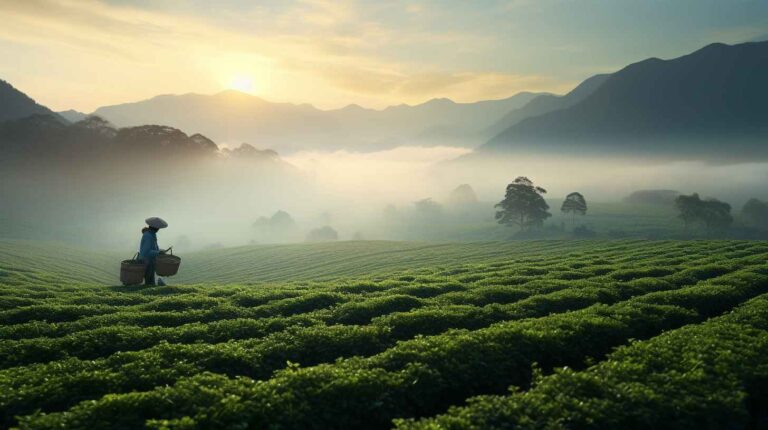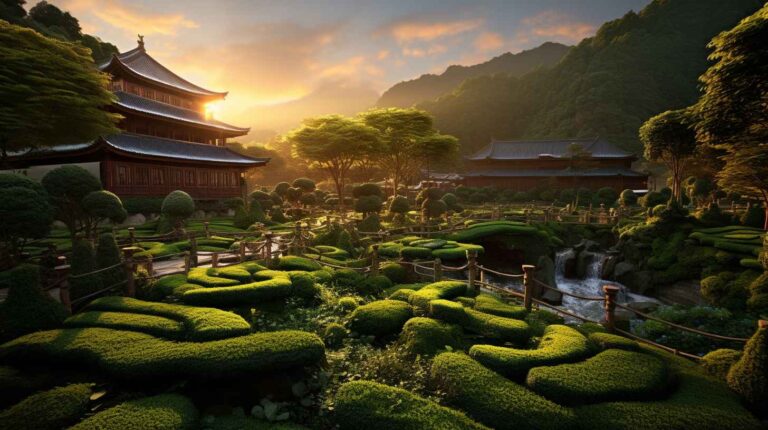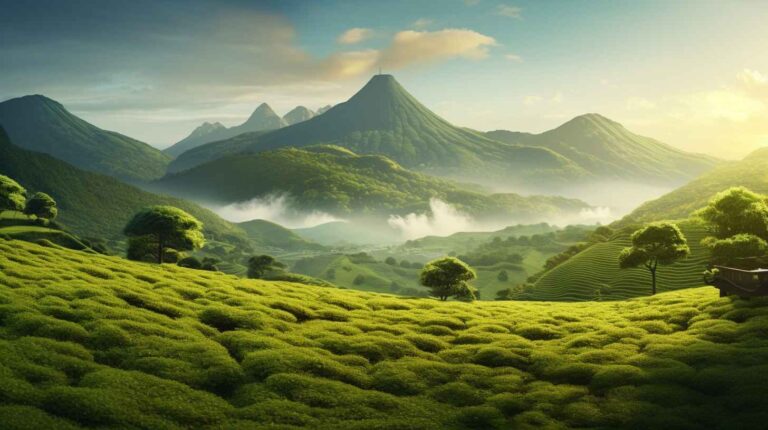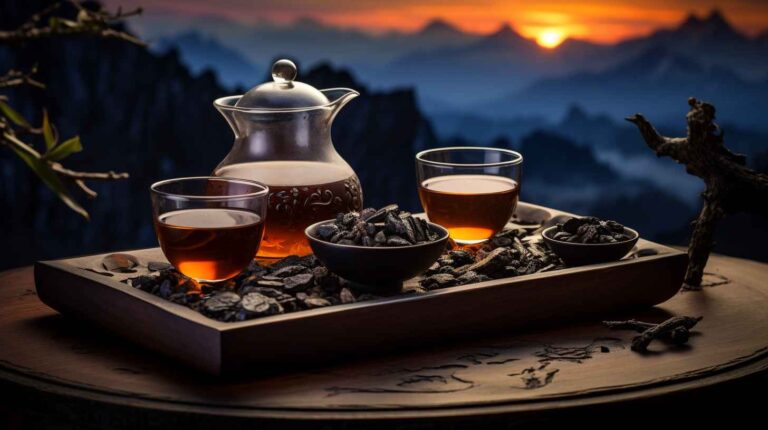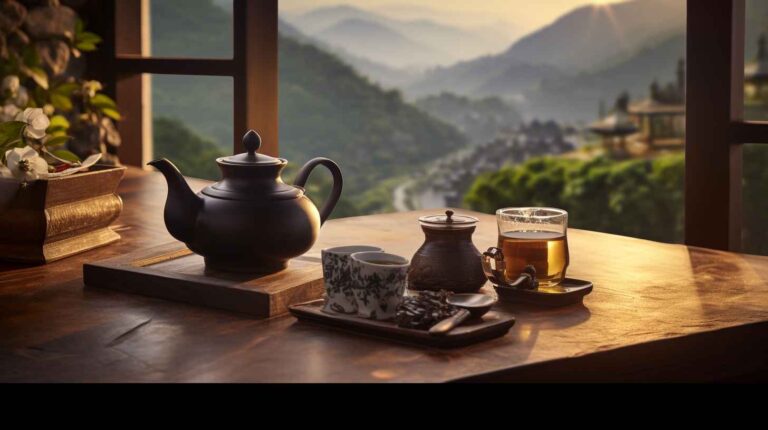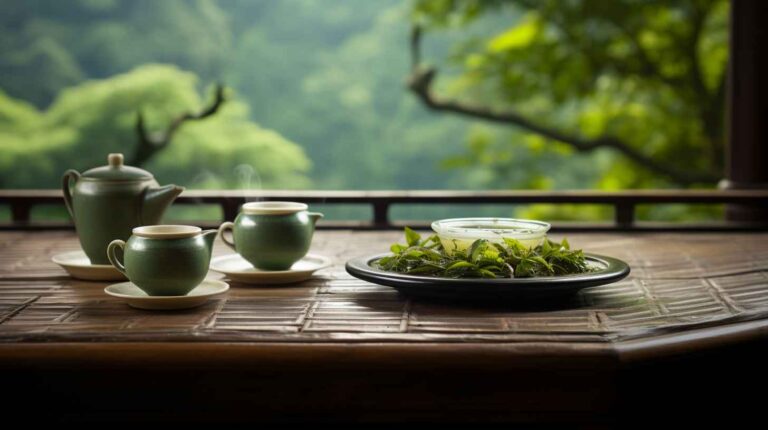Matcha vs. Gyokuro: Unraveling Japan’s Shade-grown Teas
Introduction
The world of tea is vast, offering an intricate mosaic of flavors, aromas, and stories. No country better exemplifies this tapestry than Japan, with its rich tapestry of tea varieties, each with its unique history, taste, and cultural significance. Two of the most prized among them are Matcha and Gyokuro. Both possess a mesmerizingly vibrant green hue and distinct flavor profiles, a testament to their shade-grown cultivation. Despite their shared cultivation method, they promise two profoundly different experiences for the tea enthusiast. This article aims to take you through a journey that explores the nuances, history, and artistry behind these iconic teas.
The Art of Shade-growing
To truly appreciate the nuances of Matcha and Gyokuro, understanding the art and science of shade-growing is paramount. This cultivation technique is as poetic as it is practical.
Shade-growing, or “kabuse” in Japanese, is a method refined over centuries. The principle is simple but effective. By depriving the tea plants of sunlight for a specific period before harvesting, farmers force the plants into a state of mild stress. This causes them to ramp up their production of chlorophyll and amino acids. Typically, the tea bushes are covered with cloths, often bamboo or straw screens, approximately 20 to 30 days before the leaves are harvested.
Why is this method so special? The answer lies in the leaves themselves. By increasing their chlorophyll content, the leaves attain a richer, deeper green color. This not only affects the visual aesthetic of the tea but also enhances its flavor profile. The increased amino acids, particularly L-theanine, contribute to a smoother, more umami-rich taste, setting these teas apart from their sun-grown counterparts.
Matcha: The Ceremonial Elixir
1. Delving Deeper into its History
Matcha’s journey is deeply intertwined with Japanese history and culture. The name itself, “Matcha,” is derived from the Japanese words “ma” (to rub or grind) and “cha” (tea). While the concept of powdered tea originated from China during the Tang Dynasty, it was in Japan that Matcha found its true home and purpose. By the time of the Song Dynasty in China, powdered tea had lost its popularity, but in Japan, it was being embraced and elevated to an art form, especially with the emergence of the traditional Japanese tea ceremony or “chanoyu.”
The Japanese tea ceremony, a choreographed ritual of preparing and serving Matcha, is more than just about drinking tea. It encapsulates Zen Buddhism principles, emphasizing mindfulness, simplicity, and the pursuit of perfection. Over time, as Zen monks and samurai embraced Matcha, not just for its taste but also for the meditative qualities it invoked, the tea became synonymous with Japanese culture itself.
2. A Glimpse into the Production Process
From the tea field to the tea bowl, Matcha undergoes a rigorous and intricate production process. After the shade-growing phase, the best leaves are carefully hand-picked. These leaves, now referred to as Tencha, are steamed briefly to prevent oxidation, preserving their vibrant green color. They are then air-dried, de-stemmed, and de-veined. The final step involves grinding the Tencha using granite stone mills. It’s a slow process, ensuring that the tea doesn’t get “cooked” from the friction heat, preserving its flavor and aroma. The resulting Matcha powder is so fine that it can even be compared to baby powder.
3. Exploring the Flavor Profile and Its Uses
Matcha is truly a sensory delight. When whisked with water, its vibrant green color comes alive, producing a frothy layer on top. On the palate, it offers a complex interplay of tastes – the umami richness, a touch of sweetness, followed by a slight astringent note, which leaves a lingering aftertaste.
While the traditional tea ceremony is where Matcha truly shines, its versatility is evident in its modern adaptations. Today, Matcha is not just confined to the ceremonial tea bowl. It has made its mark in cafes and kitchens around the world. From frothy Matcha lattes to delightful ice creams, smoothies, and even baked goods, Matcha’s culinary possibilities are endless.
Gyokuro: The Jewel Dew
1. A Deep Dive into its History
Gyokuro, a gem in the world of teas, offers an experience that’s nothing short of luxury in a cup. Its poetic name, “jewel dew,” captures the essence of this tea — a precious drop of flavor and aroma, reminiscent of the early morning dew in Japanese tea gardens.
Unlike Matcha, whose history stretches back centuries, Gyokuro is relatively newer on the scene. It was developed during the Edo period in the 19th century in Uji, a region synonymous with high-quality Japanese teas. Despite its relatively recent origins, Gyokuro quickly gained recognition and admiration among tea connoisseurs. It was not crafted for ceremonies or rituals but was tailored purely for a sublime tasting experience. Today, Gyokuro is considered one of the most prestigious teas in Japan, often reserved for special occasions and esteemed guests.
2. The Intricacies of the Production Process
The commitment to quality and flavor begins right from the cultivation for Gyokuro. While it shares the shade-growing technique with Matcha, Gyokuro is shaded for a slightly longer period, sometimes up to 45 days, intensifying its flavor and nutrient profile.
Post shade-growing, the tea leaves are carefully handpicked, selecting only the finest young leaves. These are then immediately steamed, preserving their rich color and preventing oxidation. Following this, they undergo a meticulous rolling process, transforming them into their characteristic slender, needle-like shape. This rolling not only helps in enhancing the flavor but also ensures the tea leaves unfurl beautifully when steeped. The leaves are then dried, resulting in the final Gyokuro product, ready for brewing.
3. Savoring the Flavor Profile
Sipping Gyokuro is akin to a sensory journey. The first thing that captivates is its brilliant, pale green liquor — a visual treat. On the palate, it is nothing short of a revelation. The taste is a deep, resonating umami, with subtle undertones of sweetness, making it one of the most refined teas you can enjoy. The experience is rounded off with a delicate, lingering aroma that’s both refreshing and calming, transporting the drinker to serene Japanese tea gardens with each sip.
Given its rich flavor, Gyokuro is best enjoyed on its own. It’s a tea that commands your full attention, urging you to savor each sip, making it an ideal choice for quiet moments of reflection or intimate conversations.
Comparing Matcha and Gyokuro: Beyond the Basics
Texture and Form: On a superficial glance, the difference between Matcha and Gyokuro is evident. While Matcha seduces with its velvety, fine powdered texture, Gyokuro entices with its elegant needle-like leaves, each promising a unique experience.
Brewing Technique: The art of brewing further distinguishes these teas. Matcha requires a brisk whisking to create a frothy, thick suspension. In contrast, Gyokuro asks for patience, with its leaves gently infusing the water, releasing its flavors gradually.
Taste: While both teas boast a strong umami flavor due to their shade-growing process, Matcha brings with it a creaminess and a hint of bitterness, giving it a broader flavor profile. Gyokuro, on the other hand, is a purist’s delight, focusing solely on the umami, offering an intense yet balanced taste.
Usage: Matcha’s adaptability is evident in its global popularity, making its way into diverse culinary creations. Gyokuro remains true to its roots, best enjoyed in its pure form, highlighting its refined taste.
Health Benefits: A Closer Look
Matcha and Gyokuro are not just about taste; they are also packed with health benefits. The shade-growing process amplifies their content of antioxidants, especially catechins, known for their anti-inflammatory and anti-cancer properties. Furthermore, the increased L-theanine content, an amino acid prevalent in these teas, promotes relaxation without drowsiness, providing a calm alertness.
While Matcha, consumed in its entirety, might have an edge in nutrient content, Gyokuro isn’t far behind. Drinking either of these teas is a step towards a healthier lifestyle, combining taste with wellness.
Conclusion: A Tribute to Japanese Craftsmanship
Matcha and Gyokuro, two teas with shared cultivation roots, stand as testaments to Japan’s rich tea heritage. Each, in its own right, represents the zenith of craftsmanship, patience, and tradition. Whether it’s the ritualistic whisking of Matcha or the serene steeping of Gyokuro, both offer more than just a beverage; they offer an experience — a celebration of Japan’s tea culture.
As you whisk, sip, and savor these teas, remember that you’re not just consuming a drink. You’re imbibing centuries of history, tradition, and the relentless pursuit of perfection. So, let each cup be a tribute to the artisans, farmers, and tea masters who have dedicated their lives to perfecting this craft. Cheers to the timeless journey of Japanese teas!
